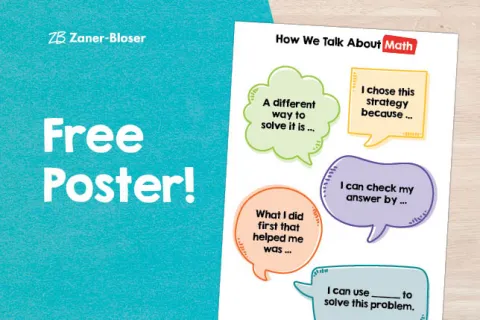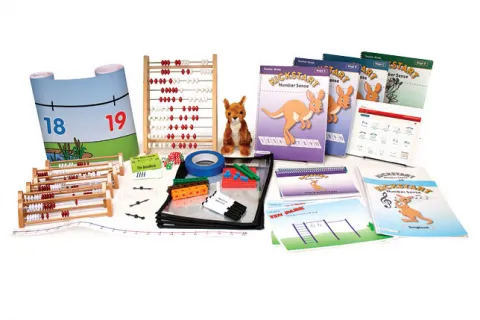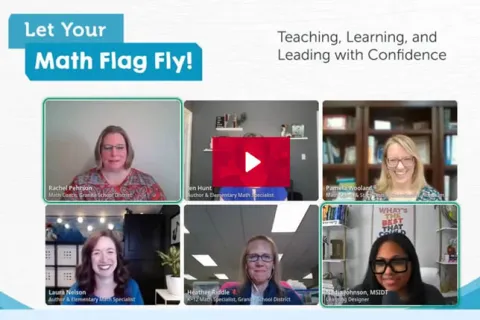
What Is Number Sense, and Why Is It Important?

Number sense is a foundational math skill evident in every state’s academic standards. What exactly is number sense, why does it matter, and how can we help students develop it?
What Is Number Sense?
Number sense is the flexible, nonverbal understanding of numbers and their relationships. It is often described as a strong intuitive understanding of numbers.
Children with strong number sense can
- visualize and talk comfortably about numbers.
- take numbers apart and put them back together in different ways.
- compute mentally.
- relate numbers to real-life problems by connecting them to their everyday world.
- use numbers and quantitative methods to communicate, process, and interpret information.
Why Does Number Sense Matter?
Number sense is key to doing well in math. It helps students add, subtract, multiply, and divide with speed and accuracy. This is true not only for basic math facts but also more complex problems, such as those with multi-digit numbers or multiple operations.
Students with signs of weak number sense tend to struggle with math generally and persistently as they move up in grade levels. Fortunately, the positive effects of number sense intervention are far-reaching as well. Students who receive extra small-group support in the early grades are less likely to need intervention at later grade levels.
It’s not just students’ early use of numbers that matters but also their ability to verbalize what they know. Talking about numbers helps students extend their knowledge—from small numbers to larger numbers, for example.
Talking about math and asking open-ended questions helps children notice math in everyday life. As they learn more, they move from using their own words and ideas to using proper math terms and symbols.
Perhaps even more important, number sense is a key to more than just math. Early number sense predicts school success more than other measures—including reading ability or verbal, spatial, or memory skills. In fact, according to researchers, foundational skills in numbers and operations may even set the stage for reading!
How to Teach Number Sense
Number sense develops gradually over time as students explore numbers in different ways and make connections between them. It is not gained by simply memorizing facts or procedures.
“Develops gradually” doesn’t mean “wait and see” if it emerges. It’s very possible to create a classroom environment that nurtures number sense development!
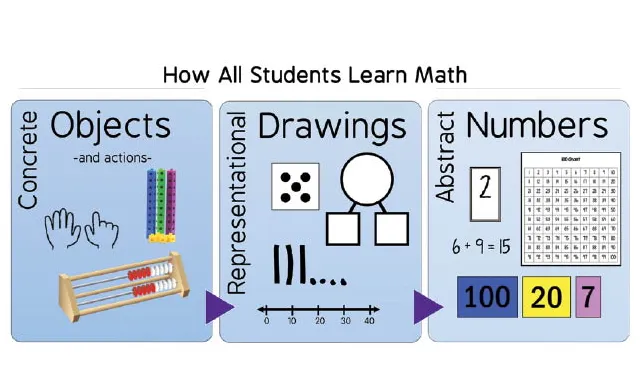
The Concrete-Representational-Abstract Approach
A concrete-representational-abstract (CRA) approach to math instruction helps students understand concepts by exploring them in three different stages.
Concrete Stage
In the concrete stage, students use real objects and hands-on activities to understand numbers. They might
count on their fingers.
stack different colored cubes.
move beads on a rekenrek.
use base ten blocks to show place value.
The concrete stage is important for all ages, not just preschool and primary students. A preschooler might count buttons while a third grader can trade base ten rods for unit blocks to learn regrouping for subtraction.
Representational Stage
In the representational stage, students draw pictures or models to show their thinking. They're not using real objects anymore, but they're still using visuals to help understand the math. They might draw
tally marks.
number lines.
dice or dominoes.
simple pictures of groups of items.
Abstract Stage
After practice in the concrete and representational stages, students are ready to use numbers and symbols to solve problems. They no longer need drawings or objects. They can work with equations and standard methods, like traditional algorithms for addition or subtraction.
Partner Talk and Vocabulary
Throughout all stages, students should be talking about their observations, sharing their thinking aloud, and asking any questions they have. This helps them practice math language and gain a deeper understanding of the ideas.
Spiraled Lessons
The concrete-representational-abstract approach doesn't always follow a straight path. Instead of moving through each stage only once, effective lessons often cycle through the stages multiple times. This repeated exposure to number sense concepts, with gradual increases in complexity, reflects two powerful teaching strategies: interleaving and spacing.
Interleaving
Interleaving is the practice of intentionally mixing related topics during learning rather than teaching them separately in large chunks. For example, instead of spending weeks studying only addition before moving on to subtraction, students might alternate between both. This switching helps them see connections between concepts and apply their knowledge in flexible ways.
Spacing
Spacing involves reviewing and practicing important ideas over time. Students revisit concepts after days, weeks, or even months. This strategy strengthens memory and deepens understanding by requiring learners to recall what they've previously learned and connect it to new material.
In short, a spiraled CRA approach that includes interleaving and spacing is a highly effective way to develop number sense!
Who Needs Number Sense Intervention?
Most core math curricula assume students arrive in the classroom with a fair amount of number sense, even as young as kindergarten. In fact, when students struggle with their grade-level curriculum, it’s often because they have less number sense than their core curriculum assumes.
A first-grade student, for example, may be able to count with one-to-one correspondence but struggle with counting on from a number or subitizing a group of dots. Number sense intervention can help.
In third grade, students with underdeveloped number sense may have mastered addition and subtraction skills without regrouping but struggle adding and subtracting with regrouping. Number sense intervention can help here too.
The placement chart below can help you identify students who will benefit from number sense intervention. Download a copy to share at your next faculty meeting.
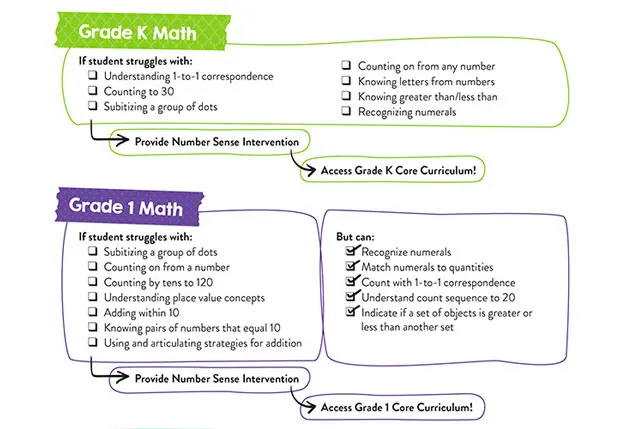
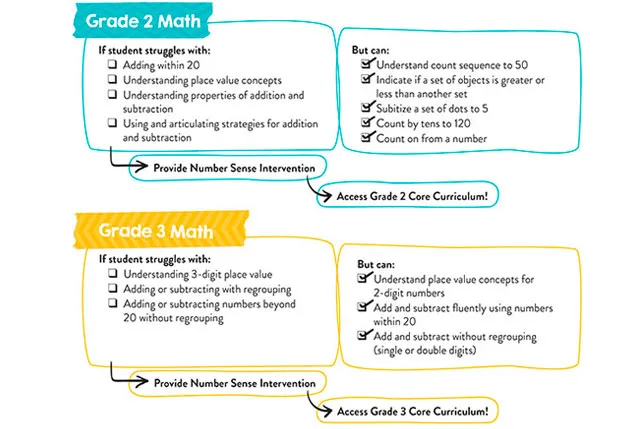
How to Support Students Struggling with Number Sense
If your K–3 students are struggling with their core math curriculum and the prerequisite skills described above, Kickstart: Number Sense can help. Learn more about the full line of Kickstart math intervention programs or contact your sales consultant for details and samples.
You May Also Like
